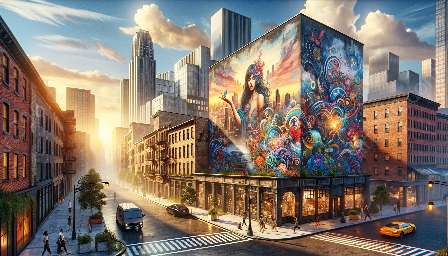In recent years, the growing prevalence of digital technology has facilitated significant changes in the curation and exhibition of street art, profoundly impacting the way in which street art is created, curated, and experienced. This transformation has not only reshaped the relationship between street art and its audience but has also played a pivotal role in elevating street art to the status of a prominent cultural phenomenon.
The Impact of Digital Technology on Street Art
In order to understand the influence of digital technology on the curation and exhibition of street art, it is essential to first examine its broader impact on street art as a whole. Digital technology has revolutionized the way in which street artists create and share their work, providing them with new tools and platforms to reach a global audience. Social media, in particular, has become a powerful medium for street artists to showcase their work, allowing them to engage with an expansive online community and gain recognition beyond the confines of traditional art spaces.
Furthermore, digital technology has enabled the documentation and preservation of street art, which has historically been transient and ephemeral in nature. Through digital platforms and applications, street art can now be archived and shared in unprecedented ways, ensuring its legacy and impact are not lost to the passage of time. This has not only expanded the accessibility of street art but has also facilitated the democratization of the art form, allowing individuals from diverse geographical locations to engage with street art in a meaningful and enduring manner.
The Evolution of Street Art Curation
The integration of digital technology has fundamentally transformed the curation of street art, introducing innovative approaches that have redefined the traditional exhibition and presentation of street art. Curators are harnessing digital tools to curate virtual exhibitions, creating immersive experiences that transcend physical limitations. Through virtual reality and augmented reality platforms, audiences can now engage with street art in a dynamic, interactive fashion, experiencing the art form in a multifaceted and technologically-enhanced capacity.
Moreover, digital technology has facilitated the curation of street art in unconventional spaces, breaking free from the constraints of traditional gallery settings. Street art can now be curated in virtual environments, urban landscapes, and even through location-based applications, allowing audiences to encounter street art within the context of its original surroundings or in entirely new, digitally-constructed spaces.
The Intersection of Digital Technology and Street Art Exhibition
When it comes to the exhibition of street art, digital technology has had a profound impact on the accessibility and engagement of audiences. Through digital platforms and mobile applications, individuals can locate and explore street art, creating a dynamic and interactive experience that transcends geographic boundaries. Street art is no longer confined to specific urban locales but has become a globally accessible cultural phenomenon, inviting audiences to participate in the discovery and appreciation of diverse artistic expressions.
Furthermore, the integration of digital technology has fostered new forms of interactive street art exhibition, blurring the lines between physical and digital spaces. Augmented reality applications, for instance, enable the overlay of digital content onto real-world environments, allowing for captivating and interactive experiences that redefine the traditional notion of street art exhibition.
The Cultural Implications of Digital Technology in Street Art
As a result of the evolving relationship between digital technology and street art, the cultural implications of this intersection are significant. Street art has transcended its traditional boundaries and has become a dynamic and influential cultural phenomenon, shaped by the transformative impact of digital technology. Audiences are no longer passive observers but active participants in the curation and exhibition of street art, contributing to its dissemination and appreciation on a global scale.
In conclusion, the influence of digital technology on the curation and exhibition of street art cannot be understated. This transformative relationship has redefined the way in which street art is experienced, curated, and valued, signaling a new era in the evolution of this dynamic and multi-faceted art form.

